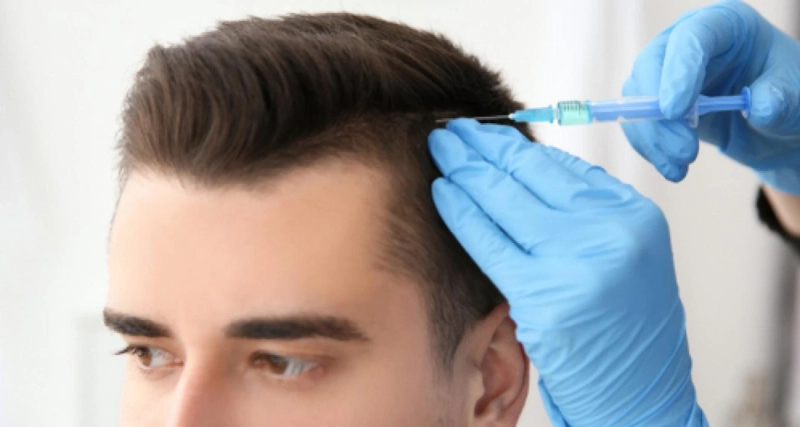Hair restoration is the most popular treatment option for hair loss these days, as more and more people want permanent solutions that can only be reached through hair transplantation. The demand for aesthetics is growing, and hair transplantation is the only procedure that can deliver the results that people expect these days. As a result, hair transplantation has become the most effective treatment for hair loss.
When it comes to cosmetic treatment, individuals are looking for more than just the correction of a problem; they also want natural-looking results. Hair transplantation is a combination of a surgical treatment and an artistic creation, and when one of them is missing, the results are harmed. So, is it feasible to achieve natural results with hair transplantation, and how successful is this procedure?
Outcomes following hair transplant
The hair transplant procedure involves moving hair follicles from the donor location to the balding area where they will be transplanted. After the hair transplant, you can expect a quick physical recovery in 7–10 days. You may lose all of the transplanted hair follicles after a few days of hair transplantation, after which the transplanted hair will rest for a while. After 5–6 months, you will notice a significant amount of hair growth, which will be completed in about a year after the surgery.
When all of the hair has grown in, you'll be able to tell if the results are natural or not.
Because Indians are recognised for their architecture and sculpting, we have been given with artistic abilities, and some of these gifted individuals have gone on to become plastic surgeons. Hair transplant in India has become the most popular tourist destination for hair transplantation. Thousands of people visit India each year in search of world-class, natural-looking hair transplants. People are also drawn for hair transplant tourism because of the low hair transplant cost in India.
Hair transplant procedure
Hair transplantation is a cosmetic surgical treatment that involves extracting hair grafts from various parts of the body and transplanting them to the targeted bald spot. The donor location from which the hair grafts are handpicked should either have permanent hair roots or be resistant to DHT. When DHT resistant hair follicles are transplanted into a bald area, they mimic the qualities of the hair roots and last indefinitely.
So, certainly, the results you get from a hair transplant will last a lifetime.
FUT and FUE hair transplant are the two most common procedures used to do hair transplants.
FUE hair transplant involves the individual extraction of hair follicles that are extracted through the skin using a punch-like surgical equipment. FUT hair transplant involves the harvesting of a strip and then the strip is divided further to retrieve individual hair follicles.
Both approaches are effective in achieving the best results; the surgeon must choose the right and most appropriate technique based on the patient's specific hair loss problem.
How to get natural hairline design by Hair Restoration surgery?
You can expect the following considerations from your surgeon to create a natural-looking hairline after you've chosen a competent and trustworthy physician and a technologically advanced clinic:
Proper hair follicle angulations: Each individual's hair angulation pattern is different. Hair follicles from the donor area are angulated in the correct direction. Because each hair in the natural hairline is aligned in a different direction, slits must be made in such a way that proper angulations of hair grafts can be achieved after transplantation.Non-linear hair transplant arrangement: Inadequately qualified or unskilled hair surgeons frequently make this mistake, arranging the hair follicles in a linear pattern, resulting in a doll-like head or wig-like appearance. This is because the hair follicles in a natural hairline are placed unevenly in a zigzag pattern rather than in a linear arrangement. A skilled hair transplant surgeon would take advantage of this expertise and keep it in mind when creating a hairline.Appropriate hair graft placement: It is critical to implant thin hair grafts in the front and around temporal triangles, while thick hair grafts are implanted at the back lines. This placement pattern ensures a natural looking hairline as well as a fuller look, providing more coverage to the bald area. The hairline should not begin or finish abruptly; instead, it should be progressive, with transitional zones. Single grafts should always be used in the first rows and should be put in a zigzag pattern, followed by double and triple rooted grafts in following lines.Focus on the Extended Hairline Zone: It is critical to have an extended hairline region that is below the hairline in order to achieve aesthetic results from hair transplantation. Most surgeons primarily concentrate on the front line or the transition zone; however, focusing on the extended hairline zone is critical for achieving a natural-looking hairline. Transition zone, defined zone, and frontal tufts are the three zones that make up the extended hairline zone. The transition zone necessitates a sparse, soft, and zigzag pattern. The defined zone requires denser and fuller grafts, and the frontal tufts, last but not least, should have the densest graft placement.

